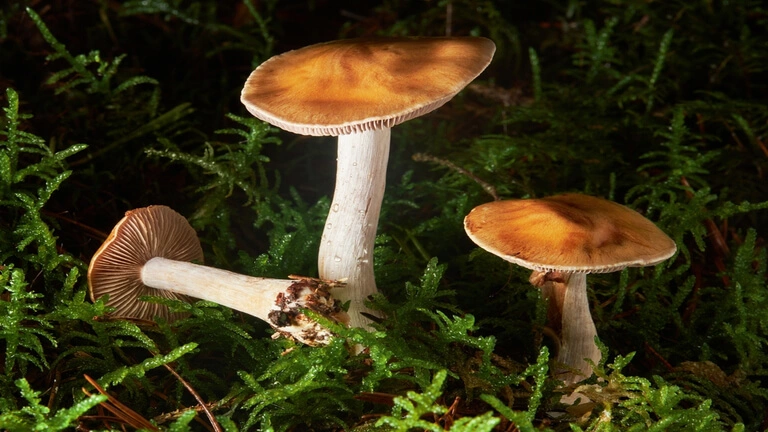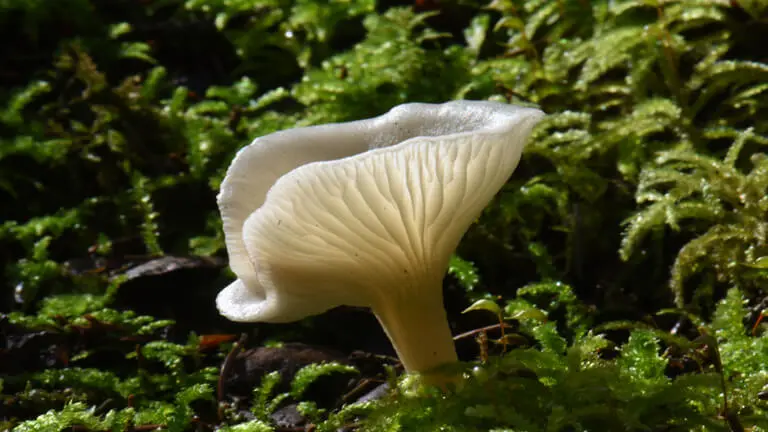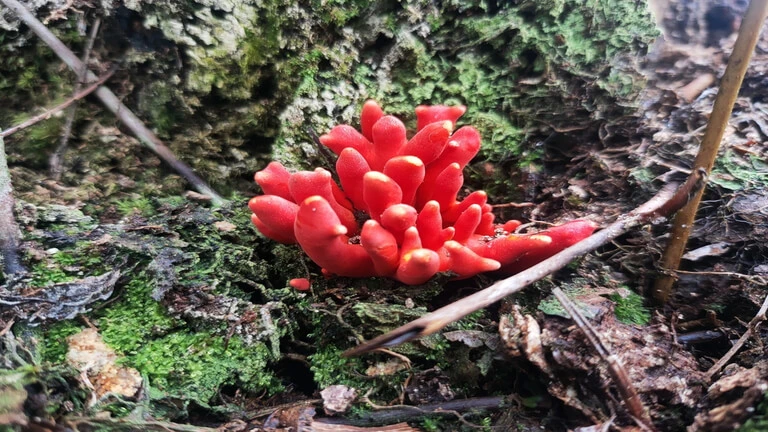Mushrooms are intriguing organisms that may be found in various colors, sizes, and shapes. While some can be eaten and taste great, others are poisonous and fatal to humans. This piece will discuss the top five most dangerous types of toxic mushrooms, which you should avoid at all costs.
Let’s jump to the list of the top 5 most poisonous mushrooms in the world:

Death Cap (Amanita Phalloides)

Because it is responsible for the vast majority of deadly mushroom poisonings across the globe, the death cap is widely considered the most infamous of all dangerous mushrooms. It is widespread in Europe, North America, Asia, and Australia, and it resembles several types of mushrooms consumed, such as straw mushrooms and Caesar’s mushrooms. Toxins resistant to heat, called amatoxins, can be found in the death cap. These toxins cause harm to the liver, kidneys, and central nervous system. Poisoning can cause various symptoms, including vomiting, diarrhea, abdominal discomfort, thirst, unconsciousness, and death. The primary therapy for amatoxin poisoning is supportive care, and in severe instances, liver transplantation may be necessary. There is no antidote for amatoxin poisoning.

Webcaps (Cortinarius Species)

About 2,000 different kinds of mushrooms belong to the genus Cortinarius, which includes a category of poisonous mushrooms called webcaps. Both the deadly webcap (Cortinarius rubellus) and the fool’s webcap (Cortinarius orellanus) may be found across most of Europe and North America. Both of these species are considered to be among the most hazardous of the webcaps. These mushrooms are toxic because they contain a substance known as orellanin, which can lead to renal failure. The symptoms of poisoning include flu-like symptoms, nausea, vomiting, headache, back pain, and decreased urine output. The onset of these symptoms might take anywhere from two days to three weeks. The sole treatment for orellanin poisoning is dialysis; in severe cases, kidney transplantation may be necessary. There is no particular antidote for orellanin toxicity.

Fly Agaric (Amanita Muscaria)

Due to its bright red cap spotted with white, the fly agaric is another species that belongs to the genus Amanita. It is also one of the most noticeable toxic mushrooms due to its appearance. It is widespread throughout the Northern Hemisphere, particularly in that region’s temperate and boreal woods. Muscimol and ibotenic acid are two of the psychoactive substances that can be found in fly agaric. These compounds work on the central nervous system and can lead to hallucinations, euphoria, confusion, agitation, delirium, loss of coordination, and seizures. The poisoning symptoms typically appear within an hour after the substance is consumed and continue for many hours. The fly agaric has a low fatality rate in humans but a high mortality rate in other animals, including dogs and cats.

Angel Wing (Pleurocybella Porrigens)

The angel wing is a fungus with the form of a white fan and develops on dead or decaying wood in coniferous forests. It is widespread in Japan, one of the few places in the Northern Hemisphere where it has long been considered edible. On the other hand, in 2004, there was a significant spike in the number of cases of poisoning in Japan caused by people eating angel wings. Seventeen persons out of 59 instances passed away within six weeks of consuming the substance. Damage to the brain was the cause of death, which was caused by a rare amino acid discovered in the mushroom. This acid damages brain cells in experimental mice. Most victims had pre-existing conditions with either their kidneys or their livers, which may have made them more susceptible to the poison.

Podostroma Cornu-Damae

The Podostroma cornu-damae mushroom is a rare and exotic species that can only be found in Asia on dead or dying trees. It resembles coral and can be either red or orange in hue. Trichothecene mycotoxins are found in it and hinder protein synthesis; cyclosporine, which inhibits the immune system; and tryptophan analogs, which interfere with serotonin metabolism and are also found in it. These three types of toxins are just a few of the many found in them. Toxic exposure can cause symptoms such as peeling skin, hair loss, low blood pressure, damage to the liver, suppression of bone marrow, and failure of several organs2. The fatality rate associated with podostroma poisoning is relatively high and can range from fifty percent to one hundred percent.
These are just a few examples of some of the most lethal mushrooms that may be found in nature. There are a significant number of other species that, if consumed by humans or animals, might result in severe illness or even death. Therefore, it is of the utmost importance to exercise extreme caution if gathering or consuming wild mushrooms. Before eating any mushroom you are unfamiliar with, you should always check with an expert or a trustworthy advisor. Always remember this important rule: when in doubt, toss it out!
We hope you enjoyed learning about the top 5 most poisonous mushrooms in the world. Remember to always be careful when picking or eating mushrooms, and seek medical attention immediately if you suspect poisoning. Have you ever encountered any of these mushrooms in your area? Let us know in the comments below.
More Related Article: Top 5 Five Very Old McDonalds Happy Meal Toys
